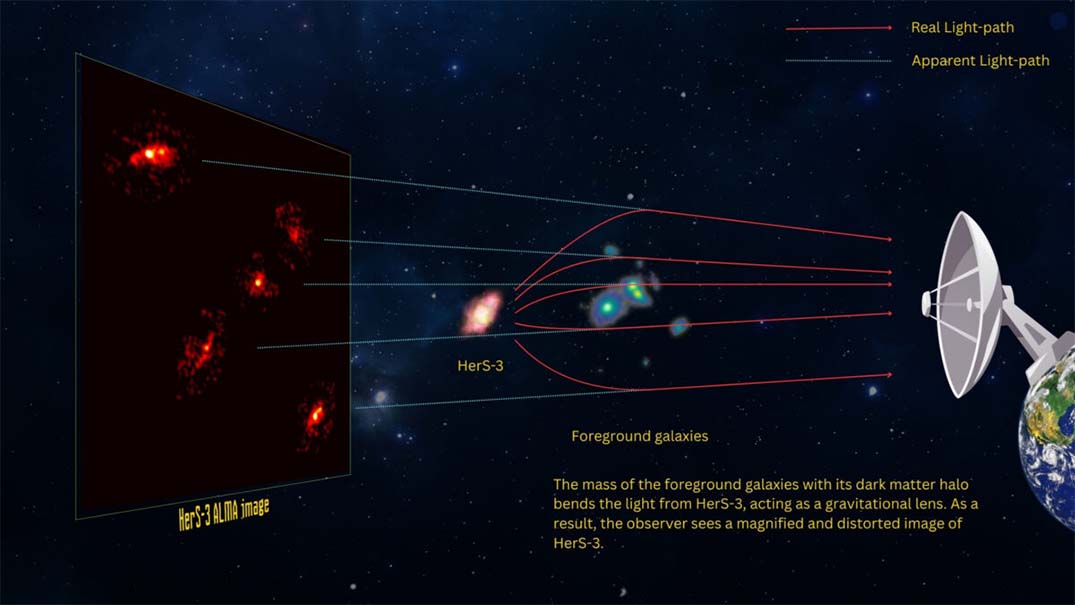An international team of astronomers, including one from the University of Cape Town (UCT), has spotted a very rare sight in the early Universe: a galaxy that appears as an “Einstein Cross” – four bright images arranged like a cross, with an extra fifth image shining in the middle.
The unusual effect – presented in a paper titled “HerS-3: An Exceptional Einstein Cross Reveals a Massive Dark Matter Halo” and has been published in the Astrophysical Journal – is caused by gravitational lensing, where the gravity of massive galaxies bends the light from a more distant galaxy, making it look brighter and appear multiple times in the sky. This system is even more puzzling as the Einstein Cross typically appears with four multiple images, but this one has five.
The galaxy, called HerS-3, is about 11,6-billion light-years away. Its light is being bent by a group of galaxies much closer to us, about 7,8-billion light-years away. Together, they produce this striking cross pattern. Observations were made with several of the world’s most powerful telescopes, including NOEMA, ALMA, the VLA, and the Hubble Space Telescope.
What makes this discovery even more exciting is that the arrangement of the five images cannot be explained by the visible galaxies alone. The only way to account for the pattern is to include the presence of a huge, invisible halo of dark matter – a mysterious substance that makes up about 80% of the matter in the Universe but does not give off any light. In this case, the dark matter halo is estimated to be several trillion times the mass of the Sun.
“Seeing this system was a real surprise; it’s something we’ve never observed before,” says Dr Lucia Marchetti of UCT’s Department Astronomy, who led the Hubble observations. “It opens a new window into studying dark matter in the distant Universe, at a time when galaxies were far more active than they are today.”
The discovery is important because systems like this act as natural cosmic laboratories. They let scientists zoom in on galaxies from the early Universe with far more detail than would otherwise be possible. At the same time, they provide new ways to study dark matter – the hidden mass that shapes galaxies and the Universe itself.
Featured picture: Einstein Cross
Photo: N. Lira, Cox et al. – ALMA (ESO/NAOJ/NRAO)

